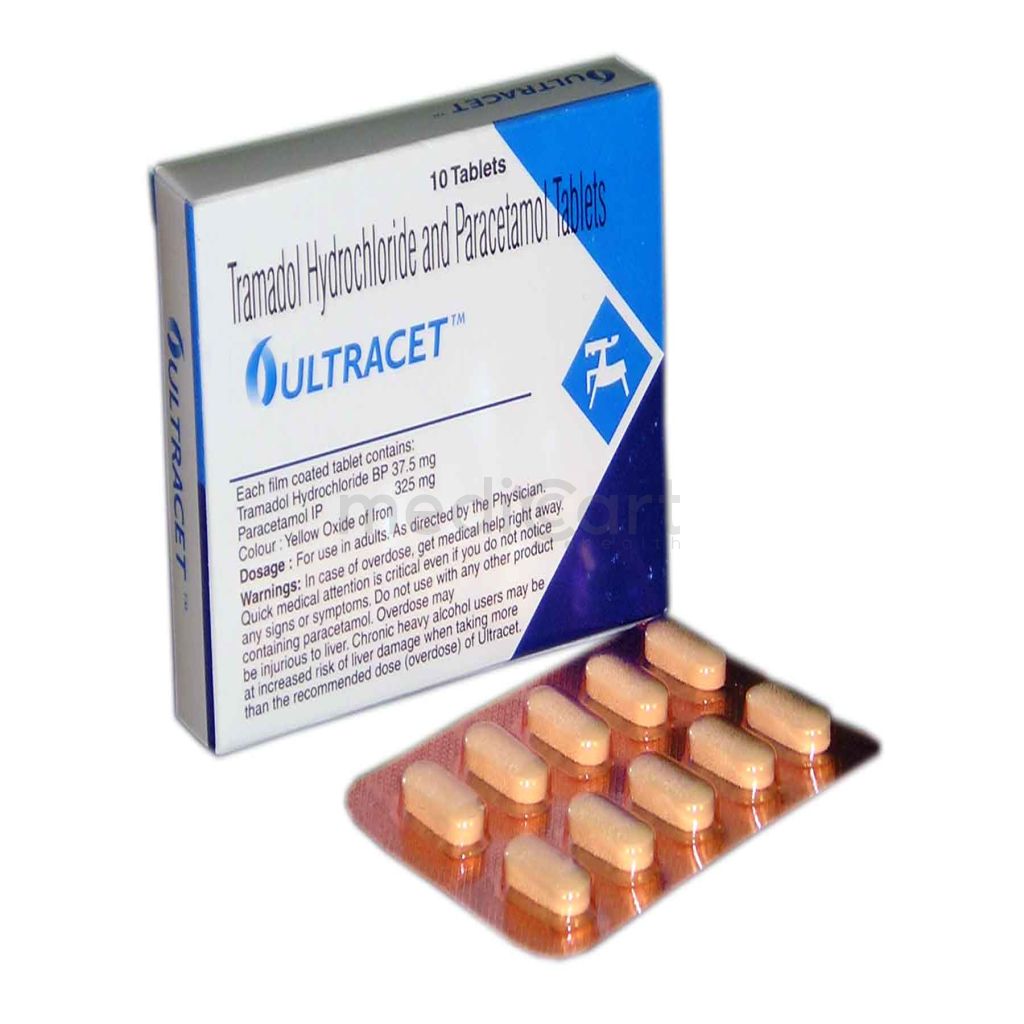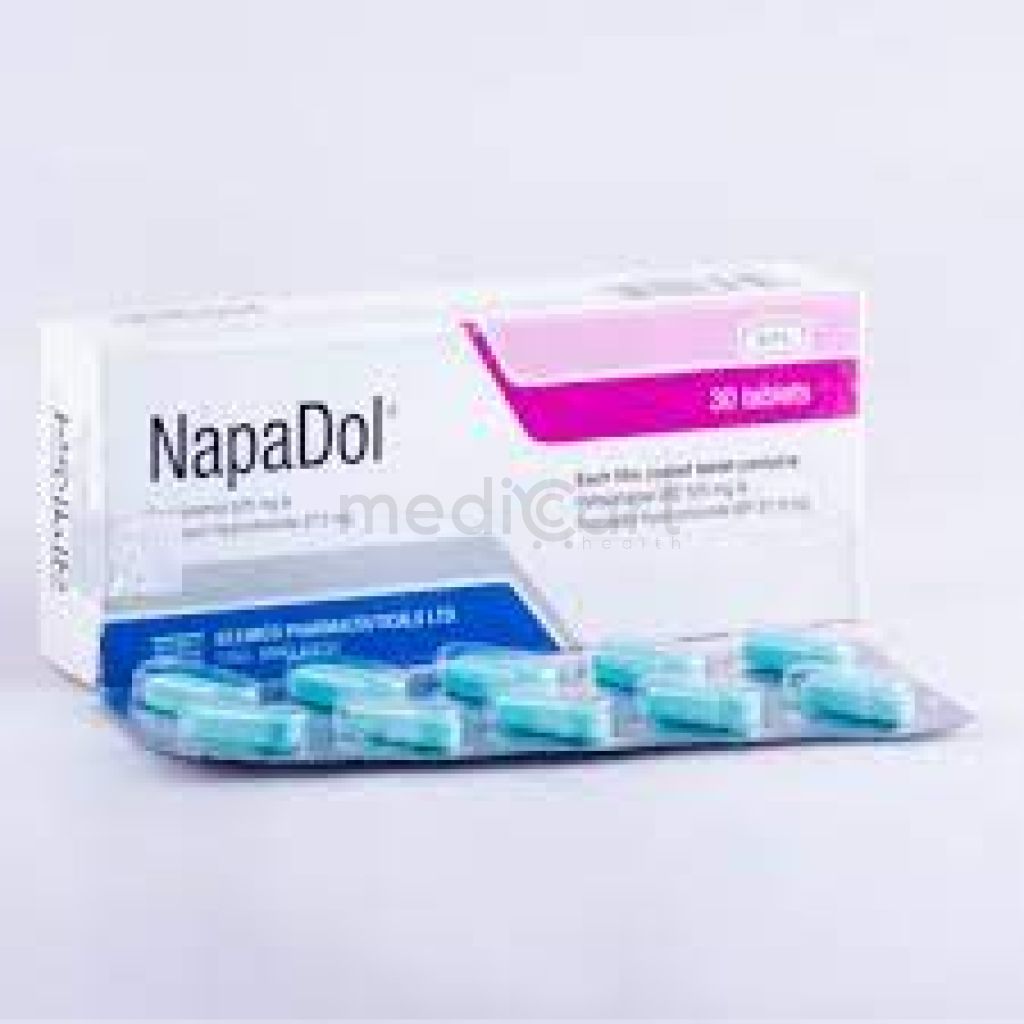

Utracet tab 325mg+ 37.5mg
Tablet
Pack Size :
10 Tablet x 1 strip
Manufacturer :
Unimed & Unihealth Manufacturers Ltd.
Best Price *
TK
80.00
* Delivery will be done in Dhaka city only.
Alternative Product
More Information About - Utracet tab 325mg+ 37.5mg
Description
Generic Name
Paracetamol + Tramadol HydrochloridePrecaution
Patient w/ epilepsy controlled by treatment, risk of seizure, cranial trauma, biliary tract disorder, altered state of consciousness for unknown reasons, problems affecting the resp centre or resp function, increased intracranial pressure, suicidal tendency or patients in a state of shock. Not a suitable substitute in opioid-dependent patients. May cause withdrawal symptoms, dependence and abuse. Severe renal impairment. Elderly. Pregnancy and lactation. Patient Counselling May impair ability to drive or operate machinery. Monitoring Parameters Monitor pain relief, resp rate, BP, and pulse rate; signs of tolerance, abuse, or suicidal ideation.Indication
Moderate to severe painContra Indication
Hypersensitivity to tramadol, paracetamol or opioids. Situations where opioid use may be contra-indicated (e.g. acute intoxication with alcohol, hypnotic drugs, centrally-acting analgesics, opioids or psychotropic drugs). Severe hepatic impairment, uncontrolled epilepsy. Concurrent use or within 2 wk of discontinuation from MAOIs.Dose
N/ASide Effect
Postural hypotension, resp depression, hepatotoxicity, Stevens-Johnson syndrome, toxic epidermal necrolysis, bradycardia, collapse, allergic reactions w/ resp symptoms (e.g. dyspnoea, bronchospasm, wheezing, angioneurotic oedema), changes in appetite, motor weakness, changes in mood, activity, cognitive and sensorial capacity; exacerbation of asthma, withdrawal symptoms (e.g. agitation, anxiety), skin rash, blood dyscrasias, hypoprothrombinemia. Potentially Fatal: Severe anaphylactic reactions.Pregnancy Category
Name : Not Classified
Description
FDA has not yet classified the drug into a specified pregnancy category.Mode of Action
Tramadol is a centrally acting opioid analgesic which binds to mu-opioid receptors and weakly inhibits the reuptake of norepinephrine and serotonin. Paracetamol, a para-aminophenol derivative, has analgesic, antipyretic and weak anti-inflammatory activity. Together, tramadol and paracetamol has faster onset of action compared to tramadol alone and longer duration of action compared to paracetamol alone.Interaction
Increased risk of seizures and serotonin syndrome w/ SSRIs, SNRIs, TCAs, and 5-HT agonists (e.g. sumatriptan). Increased CNS depression w/ barbiturates, benzodiazepines, other anxiolytics, hypnotics, sedative antidepressants, sedative antihistamines, neuroleptics, centrally-acting antihypertensive drugs, thalidomide and baclofen. Decreased analgesic efficacy w/ ondansetron. Increased INR w/ warfarin. Potentially Fatal: Increased risk of seizure and serotonin sydrome w/ MAOIs.Pregnancy Category Note
Pregnancy Prolonged use of opioid analgesics during pregnancy may cause neonatal opioid withdrawal syndrome; available data in pregnant women are insufficient to inform a drug-associated risk for major birth defects and miscarriage Labor and delivery Use of tramadol during labor may lead to respiratory depression in the neonate Opioids cross the placenta and may produce respiratory depression and psycho-physiologic effects in neonates; an opioid antagonist, such as naloxone, must be available for reversal of opioid-induced respiratory depression in the neonate; use is not recommended in pregnant women during or immediately prior to labor, when other analgesic techniques are more appropriate; opioid analgesics, can prolong labor through actions which temporarily reduce the strength, duration, and frequency of uterine contractions; however, this effect is not consistent and may be offset by increased rate of cervical dilation, which tends to shorten labor; monitor neonates exposed to opioid analgesics during labor for signs of excess sedation and respiratory depression Lactation Tramadol and its active metabolite, O-desmethyltramadol (M1), are present in human milk; there are published studies and cases that have reported excessive sedation, respiratory depression, and death in infants exposed to M1 via breast milk; women who are ultra-rapid metabolizers of tramadol achieve higher than expected serum levels of opioids, potentially leading to higher levels of M1 in breast milk that can be dangerous in their breastfed infants; in women with normal tramadol metabolism (normal CYP2D6 activity), the amount of tramadol secreted into human milk is low and dose-dependentAdult Dose
Oral Moderate to severe pain Adult: 1-2 tab 6 hrly. Max: 8 tab/day. Max duration: 5 days. Hepatic impairment: Moderate: Increase dosing interval. Severe: Contraindicated.Child Dose
Not recommended in child under 18 years of age.Renal Dose
Renal impairment: CrCl (ml/min) Dosage Recommendation 10-30 Increase dosing interva to 12 hr.ly <10 Not recommended.Administration
May with or without food.Disclaimer
The information provided herein are for informational purposes only and not intended to be a substitute for professional medical advice, diagnosis, or treatment. Please note that this information should not be treated as a replacement for physical medical consultation or advice. Great effort has been placed to provide accurate and comprehensive data. However, Medicart along with its authors and editors make no representations or warranties and specifically disclaim all liability for any medical information provided on the site. The absence of any information and/or warning to any drug shall not be considered and assumed as an implied assurance of the Company.










